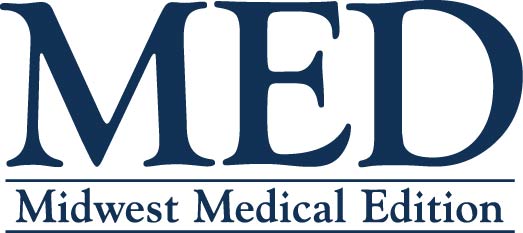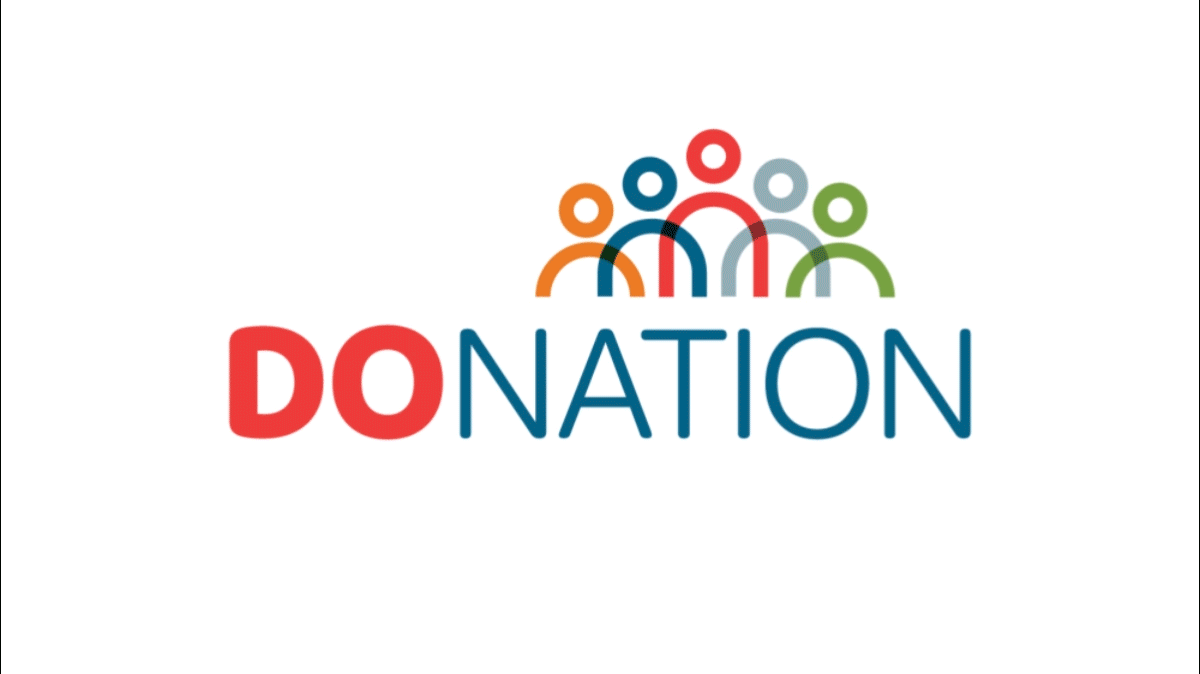At the end of each year MED: Midwest Medical Edition, a digital partner with The South Dakota Association of Healthcare Organizations (SDAHO) looks back at the top healthcare stories and headlines from the past year. In this year’s edition several CEOs of some of the region’s leading hospitals and health systems were invited to share some of the things they are looking forward to in the year ahead.
To read the entire article Looking Forward: Regional Healthcare Leaders Share Their Hopes for the Year Ahead, written by Alex Strauss, click here.
For more than a decade, MED has used this space in our December issue to revisit some of the top healthcare stories and headlines from the past year. But, given the stress and challenges of the last few chaotic years in medicine, we decided to focus our cover feature, instead, on hope and anticipation.
In that spirit, we invited CEOs of some of the region’s leading hospitals and health systems, both small and large, to share some of the things they are looking forward to at their respective organizations in 2024. To avoid painting an unrealistic picture, we also asked each respondent to anticipate some of the challenges they are likely to face along the way. Below are the responses from SDAHO’s member facilities, the full article contains responses from all who participated.
John Allen, President and CEO at Prairie Lakes Healthcare System, Watertown, South Dakota
1) What are you most excited/hopeful about for your organization in the coming year?
We have an amazing opportunity to design healthcare delivery specifically for our region. As a rural regional health system, we know our communities, our current capabilities, as well as opportunities to close gaps and integrate care across the continuum. Laying out the “how” and “when” to execute on a future state design is incredibly exciting. It’s the opportunity to do nothing less than positively benefit the health of our region for the next generation.
2) What (if any) challenges might the organization have to overcome to accomplish this?
One word: People. The systemic shortages of healthcare workers across multiple disciplines have dramatically impacted the cost of care and the ability to focus beyond the next work shift. Acting on opportunities to highlight why we are a great career destination, while embracing technology and process redesign is crucial to what we must do to sustain care capabilities.
Bill Gassen, President & CEO of Sanford Health
1) What are you most excited/hopeful about for your organization in the coming year?
Our landmark $350 million virtual care initiative will help to fill gaps in provider shortage areas and expand access to care across our vast rural geographic footprint. We will provide the most advanced technology close to home, allowing patients to immediately access care, monitor their health and connect with a trusted provider from home or a nearby satellite clinic. A new Virtual Care Center, currently under construction in Sioux Falls and set to be fully operational by late 2024, will serve as the hub for this work, featuring dedicated clinician workspaces equipped with the latest telemedicine technology to offer on-demand urgent care, behavioral health care and primary care. As part of the virtual care initiative, we will also establish a new Education Institute, which will serve as the premier training ground to attract, retain, and prepare medical students, residents and nurses for this next generation of care delivery.
2) What (if any) challenges might the organization have to overcome to accomplish this?
We are focused on investing in our workforce and building a strong culture. Our people are our greatest strength. Our more than 2,800 physicians and advanced practice providers allow us to deliver on our promise of providing world-class care across the upper Midwest. Our biggest opportunity is to retain the people we have here. We are building a pipeline of the next generation of physicians and nurses through partnerships with medical and nursing schools in our region to strengthen the rural health care workforce of the future. We’ve made an unprecedented $300 million expansion in our GME programs. Sanford Health will fully fund 15 additional residency and fellowship programs, which will train more than 300 residents and fellows a year.
Expanding the number of medical residency training programs in rural areas is key to filling gaps in care because many doctors — including more than half of family medicine physicians — stay within 100 miles of where they train. At Sanford Health, up to 40% of the physicians who train with us stay and practice with Sanford, and 70% choose to practice in the upper rural Midwest.
Paulette Davidson, President and CEO at Monument Health, Rapid City, South Dakota
1) What are you most excited/hopeful about for your organization in the coming year?
I am excited to kick off 2024 with the new and updated Monument Health five-year Strategic Plan. This set of goals and priorities will guide Monument Health through 2029, and provide a roadmap for our Physicians, Caregivers and Governing Board to keep us all moving forward with the shared mission to Make a Difference, every day. The Strategic Plan focuses on five priority areas: Deliver high-quality care; Provide a caring experience; Be a great place to work; Impact our communities; and Be here for generations to come.
Our Physicians and Caregivers play a critical role in carrying out our strategic plan. We are all equally invested because we each had a hand in building the goals that steer our future and empower us to do the right thing. Each new year brings new ways for us to innovate and collaborate, and with the rollout of new strategic goals I am very excited for the new year at Monument Health.
2) What (if any) challenges might the organization have to overcome to accomplish this?
It’s no secret that the healthcare industry, like many others, is facing uncertain times. At Monument Health, we anticipate there will be challenges and unexpected obstacles in the next five years. Many of the hurdles that we have worked to overcome may be challenges we face again, and no doubt new opportunities will emerge as well. Despite this, our commitment to the communities we serve remains unwavering, and I have confidence in the people who work for our organization.
Our strategic plan will require leadership focus, agility and strong engagement from our teams. As a healthcare system, Monument Health made significant progress executing the 2018-2023 five-year strategic plan. That plan established a strong foundation for the coming five years.
On a daily basis, we rely heavily on the voice of our physicians and caregivers, as they provide valuable insight based on best practices. We have built an atmosphere of Just Culture, encouraging everyone to report areas for improvement and provide feedback in daily tiered safety huddles. We’ve taken great strides to create a culture of excellence through a triadic leadership model enabling shared decision-making. Together, as a team, we will continue to care for our communities and provide comprehensive healthcare, close to home, for our patients throughout the region.
Jim Dover, President and CEO at Avera Health, Sioux Falls, South Dakota
1) What are you most excited/hopeful about for your organization in the coming year?
Avera is well positioned in terms of size, scale and essentiality. We are big enough to scale up for growth initiatives and small enough to react nimbly to needs in our market. And, Avera is essential in our market because of our broad and varied access points across our region. Healthcare is a basic human need and a sought-after service for improved quality of life.
Avera is exceptionally positioned to serve a better tomorrow through preventive care today. We are excited about our future because we will use these three factors and have a meaningful impact.
2) What (if any) challenges might the organization have to overcome to accomplish this?
Becker’s Hospital Review reports that more than 600 rural hospitals are at risk of closure. Yet at a time when other systems are closing their rural hospitals and long-term care centers, Avera is growing, expanding and replacing aging facilities. We can’t do this without the support of our state legislature and Congress.
Appropriate financing through Medicare and Medicaid reimbursement that keeps up with the cost of services makes or breaks nonprofit healthcare facilities. Additionally important is post-acute availability for people who need an appropriate care setting after a hospital stay, like long-term care or transitional care. But staffing mandates have the potential to create insurmountable hurdles that could close facilities in rural America.
Another critical challenge is workforce, especially for healthcare because we’re a people-centered industry and cannot deliver our services without competent, well-trained staff. We continue to deploy a number of key strategies including targeted recruiting efforts, enhanced pay and benefits, and partnerships with numerous universities and tech schools across our footprint.
These partnerships vary greatly from supporting four-year nursing education to specific training programs such as radiology techs, to scholarships and sponsorships for students that grow our talent right here in South Dakota and our wider region.
Erick Larson, President and CEO, Huron Regional Medical Center
1) What are you most excited/hopeful about for your organization in the coming year?
First, I couldn’t be prouder of the work we’re doing here at Huron Regional Medical Center. We have made huge strides in many of our initiatives to improve the care we provide to our patients. We’ve been diligent in our attention to patient safety and clinical quality while at the same time working hard to meet our diverse community members where they’re at through our Community Liaison program – and then there’s everything in between we’re elevating each day!
As with many healthcare institutions this past year, our post pandemic recovery has had its ups and downs. We are greeting this next year with great optimism as we see our outpatient service lines grow and bring much needed services to our community – including expanded orthopedic surgery, podiatry, and pediatrics. It’s exciting to see the countenance of community members light up when we talk about the infusion of new practitioners to our organization and local options this gives them.
2) What (if any) challenges might the organization have to overcome to accomplish this?
Ultimately, we need to continue to tweak on putting the patient experience at the forefront of what we do. There is a lot that goes into what shapes and influences the patient experience. We realize patients can choose where to get their care – and can often be influenced by things we can’t control, but our challenge is to master those things within our sphere of influence to the benefit of the patients in our community.
One hot topic in our area is the influx of non-local insurance companies working to influence care decisions of our communities – which is unfortunate. There’s little we can do to affect those efforts directly. But, what we can do is help educate our community on what insurance plans may mean to them – thereby raising awareness to the cause and effect of what may seem to some as a trivial matter until they seek local care.
As a critical access hospital, we recognize we can’t be all things to all people but, we have the responsibility to be the conduit of care for every member of our community.
Article provided by MED Midwest Medical Edition. On behalf of SDAHO, thank you to the MED Midwest Medical Edition team for their continued digital partnership.




